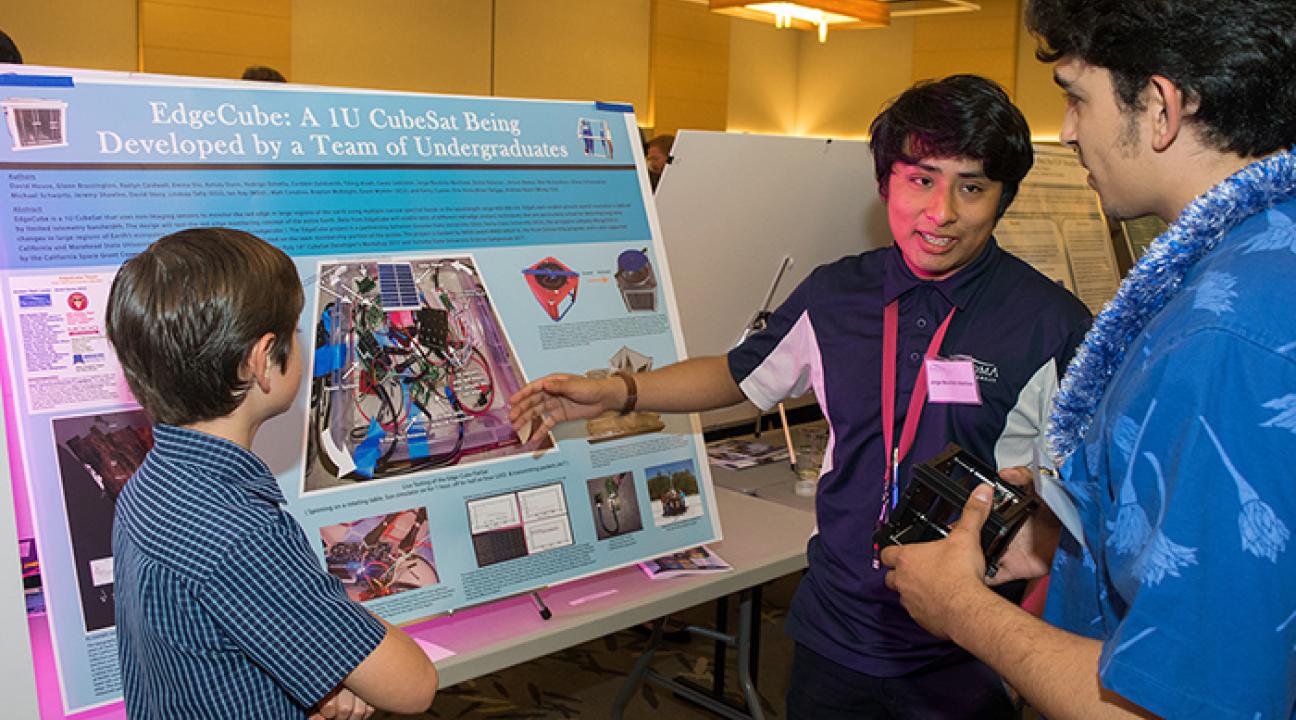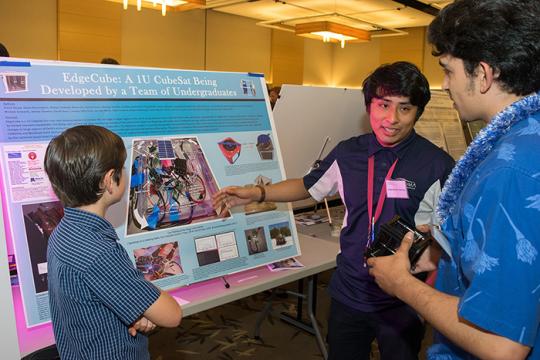Research Flourishing
Symposium's Immense Growth Underscores Commitment to Undergraduate Research
Over 1,000 students, faculty, staff and community members came out to Sonoma State University's annual Undergraduate Research Symposium this year, which saw student participation double to over 250 presentations by more than 500 students on Wednesday, May 3 in the Student Center ballroom.
"I knew it was going to be bigger this year, but I was still surprised at the number of students who participated," says event coordinator Daniel Smith, director of SSU's Office of Undergraduate Research and Creative Experiences.
Well over 1,000 attendees came to the two-hour poster session in the grand ballroom, which was preceded by dozens of PowerPoint presentations in meeting rooms one floor below. "We filled the grand ballroom with hundreds of poster presentations, and people are showing up to see them and interact with the students behind the research," says Smith. "It's a sign that the campus community is really engaged in academics at Sonoma State."
In just three years time, the symposium has grown become the largest single academic event hosted by the University. Reasons for this are numerous, says Smith, but can be largely attributed to a $1 million donation from the Koret Foundation last year to fund students and faculty to work on undergraduate research projects. More faculty are also working symposium presentations into their class requirements.
The results are staggering. The total number of presentations jumped from 180 to 277 this year, with participation increasing from each of the University's five schools. Student participation increased 53 percent from 341 to 521 students this year, including an 80 percent increase from 165 to 249 poster presentations. All but 18 presentations were made by undergraduate students, which underscores Sonoma State's unique commitment to undergraduate research, says Smith.
The atmosphere was electric in the ballroom, with attendees squeezing past one another to see poster presentations and talk to students about their research on topics like tiger salamander conservation, building and launching a tiny satellite into space, how children interact with robots versus humans and hundreds more.
"Something that stands out to me is the level of professionalism of the students," says Smith. "The poise with which they present their work is really impressive."
John Wingard, dean of the School of Social Sciences, was equally impressed. "I walked in thinking of was a reasonably intelligent person," he told the crowd during an awards presentation ceremony. "Then I walked around and realized how little I actually know."
Lynn Stauffer, dean of the School of Science and Technology, expressed similar enthusiasm. "I'm so incredibly proud of everyone," she said. "There is so much excitement in this room."
But perhaps the best indicator of engagement from the campus community can be measured in baked goods. "Based on the success of last year, I scaled up and ordered 800 cookies for the event," says Smith. "They were gone within half an hour."



